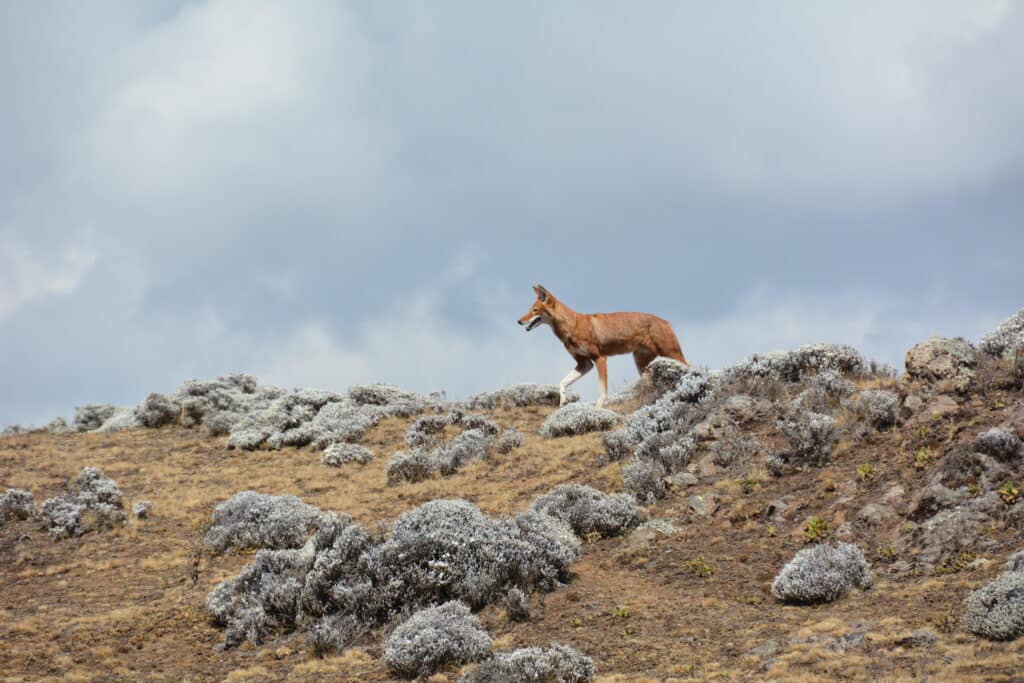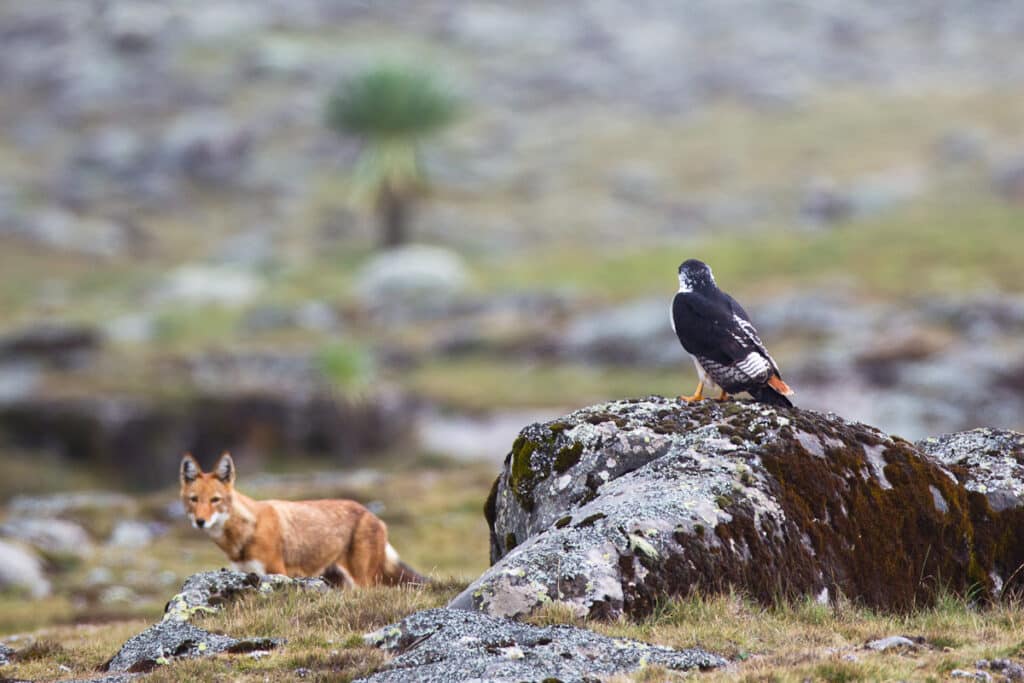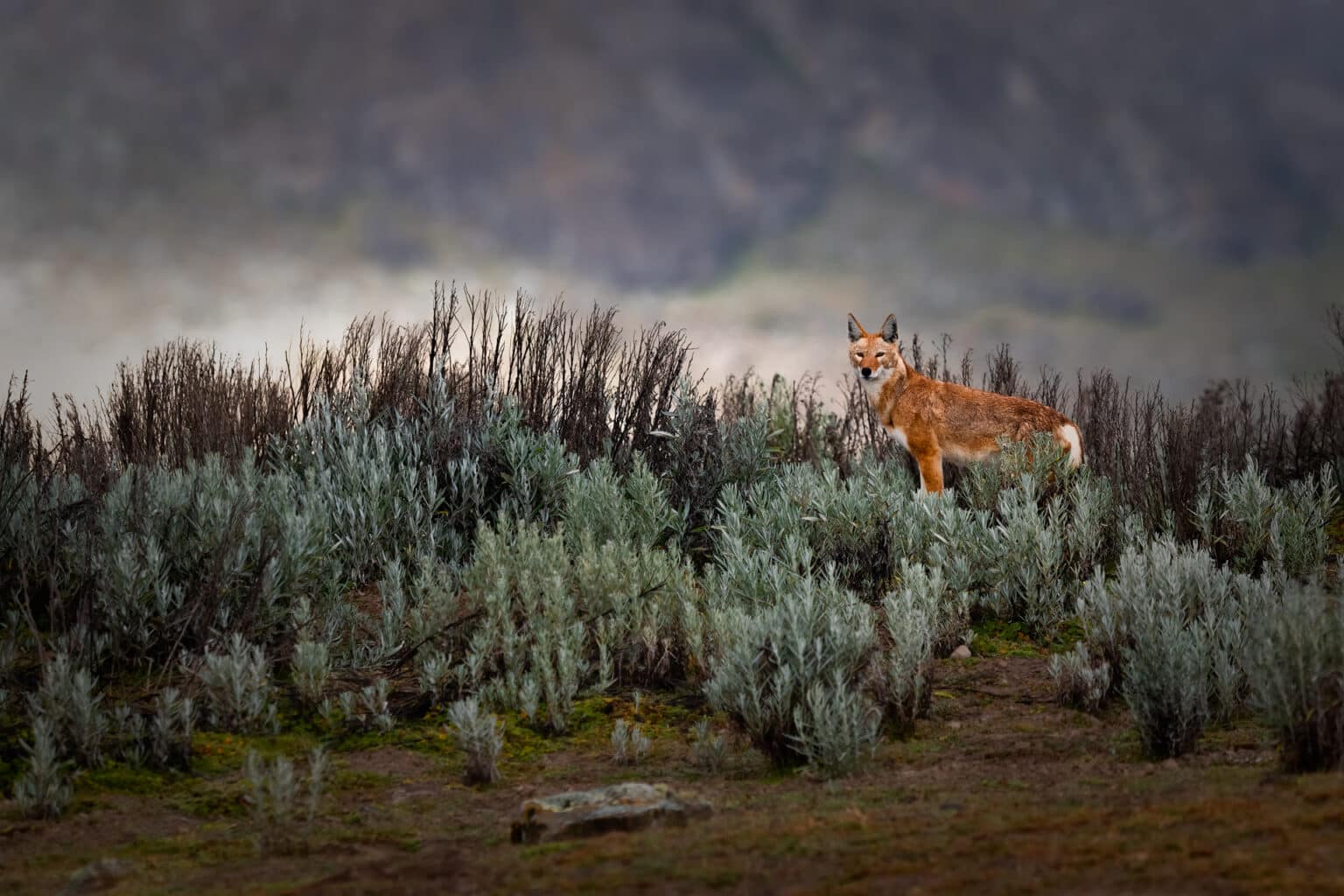In the Bale Mountains with the Ethiopian wolf
Shaped by glaciation, lava and the Great Rift Valley, the Bale Mountains in the south-eastern Ethiopian highlands are an extraordinary landscape. A UNESCO World Heritage Site, the ridges, plateaus and valleys create a network of diverse ecosystems of forest, grassland, moors and wetlands, fed by five rivers that extend beyond the borders of Ethiopia. The rough terrain has given rise to an exceptionally high number of endemic species.
Amongst the ravines and peaks of the mountains lives the endangered Ethiopian wolf. Moving with graceful quiet through this dramatic and rugged landscape, the wolves are both watchful and playful. Something primal is evoked when watching these animals; it’s easy to imagine our ancestor’s living alongside these wolves. A discovery in 2017 shows the Ethiopian wolf has existed in this part of Africa over 1.5 million years – the ancient throwback to today’s pet pooches.

Sometimes called ‘red jackals’ (kay kebero in Amharic), Simien fox or Abyssian wolf, the Ethiopian wolf, Canis simensis, is genetically closer to the grey wolf and coyote. Weighing 12-18kgs, the wolves are closer in size to domestic dogs than their larger cousins. Super social, they live in packs of up to 20 and defend their territory and young from eagles and other packs. Bringing up pups is a team effort and the hunters return to regurgitate food for their young for their first four months. The Ethiopian wolf is unusual in hunting alone, mostly preying on the thousands of giant molerats and grass rats that live in the Afroalpine highlands at over 3000m. They’ve evolved a long, slim snout to sniff out rodents and their reddish coat, white underbelly and short, black-tipped tail give them excellent camouflage in the scrub. With temperatures reaching freezing at this high altitude, the wolves’ coats keep them warm as they curl up together for the night.
The Ethiopian wolf is the rarest canid in the world with only about 500 remaining. They exclusively live in several pockets of the Ethiopian highlands, and the population is under constant pressure from human agriculture and the spread of canine diseases. However, stewardship of the wolves by the local community and better infrastructure within the national parks are aimed at gradually improving their conservation. The largest population lives in the Bale Mountains National Park, with around 160 to 180 individuals in total. The Ethiopian Wolf Conservation Programme works to protect these ‘guardians of the roof of Africa.’
Sighting this majestic creature is reason enough to make the journey into the Bale Mountains. The Mountain Nyala and Bale Monkey are fellow endemics, alongside smaller animals and a wealth of flora enriching the Harenna Forest and Sanetti Plateau. Hiking here is superb and, in such an expanse alongside the Ethiopian wolf, a humbling, invigorating and restorative experience.

Visiting Bale Mountains National Park
How to reach the Bale Mountains? Ethiopia is a vast country and this part of the highlands are in the south-eastern Oromia region. Approximately 400km from the capital Addis Ababa, driving to the National Park takes between 7-8 hours, mostly on paved roads. The full day’s drive is a great opportunity to see the country – including the spectacular Rift Valley – and there’s plenty of time to stop along the way for lunch and photos.
Domestic flights also connect Addis to Goba (Robe airport). The flight is 1 hour, followed by an hour’s drive to the National Park, offering a speedy alternative.
Upon arrival at Bale Mountains National Park, you will need to buy permits at the reception center.
Far and away the best place to stay is the Bale Mountains Lodge, sitting in a clearing within the Harenna Forest. It is also possible to camp in the Park, which could be just a basic tent or a more comfortable mobile camp set-up.
Join us now on an expedition to explore the Bale Mountains and catch sight of the elusive Ethiopian wolf.
